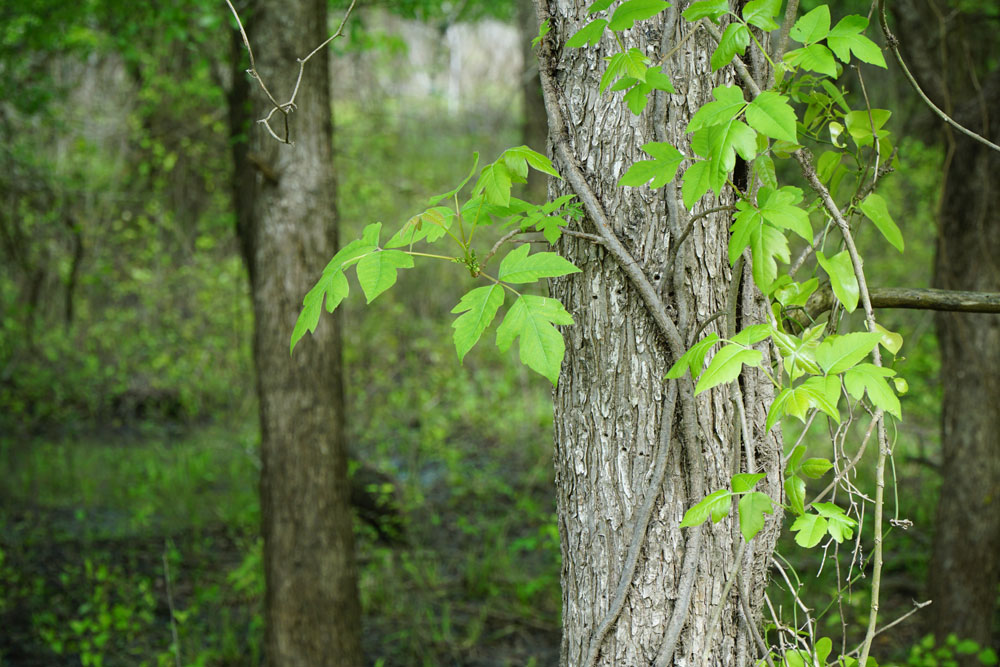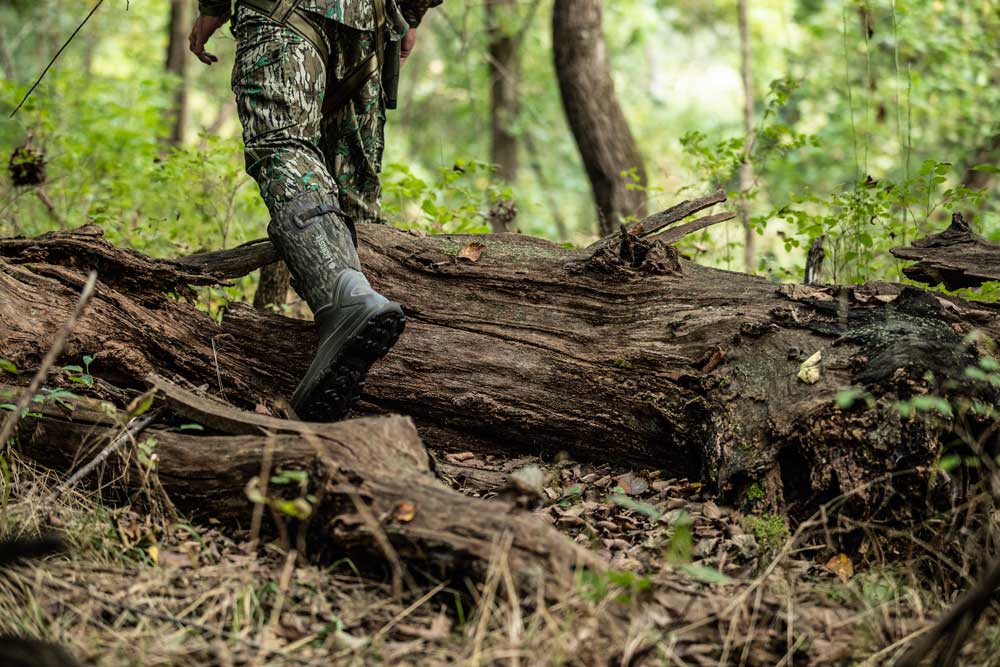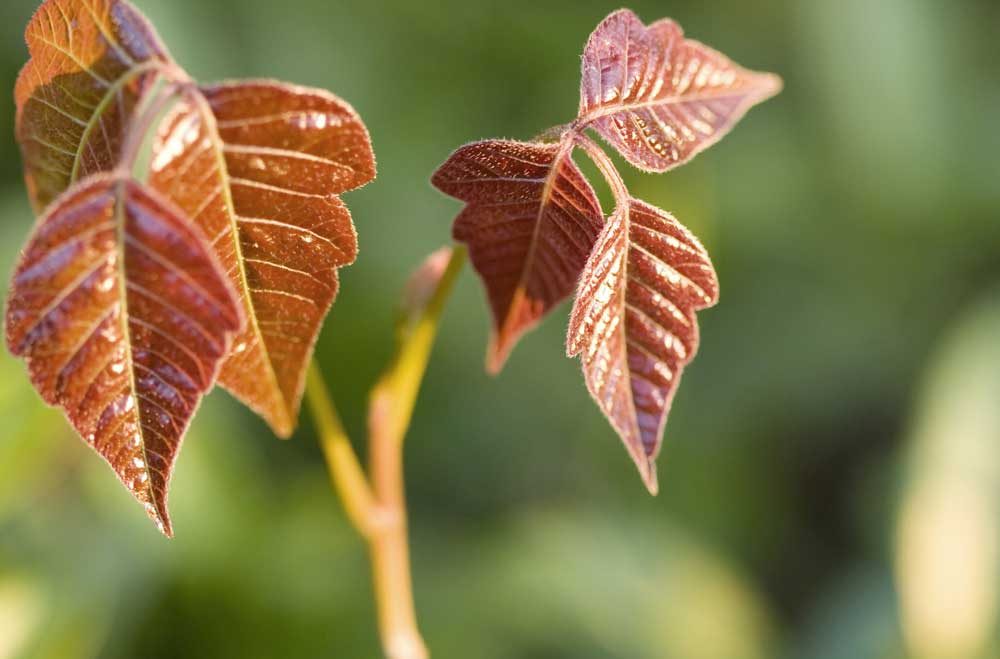People that enjoy the outdoors prefer to get off the couch and get outside. Regardless of how you enjoy Mother Nature, everyone should have a few skills before they venture off the beaten path. For example, knowing how to identify poison ivy or what poisonous wild berries look like can prevent a nasty rash or trip to the doctor. There is nothing worse than taking the family on a hiking trip and coming home with poison ivy.

Know Before You Go
It makes common sense to know what poison ivy looks like before going out, but many experienced adventurers still come home every year with poison ivy. Many have heard the old saying “leaves of three, let it be,” but they don’t know what the plant looks like when winter rolls around. Even if you spend the whole weekend camping in the rain you can still come home with a nasty case of poison ivy.
Spring Color
The poison ivy plant will always grow leaves of three, but the color phases of the poison ivy plant change with the seasons. Much like the sumac shrub, poison ivy leaves have a green and red coloring during the early spring. The stems will also have a collection of flowering green buds that will slowly grow into tiny white flowers. If you are tired of the long winter and cannot wait to hit the trails, you should be on the watch for this colorful plant.
Summer Color
Everything turns green in the summer, and poison ivy is no exception. As the leaves mature, they turn from red to a lush green. If you examine the stems carefully, you will notice small white flowers and berries. Leaf size will vary from small to large, depending on the plant.
Fall Color
The fall brings shorter days and cooler nights. Plants and trees of all varieties begin to change color, and poison ivy is no exception. The brilliant green leaves may be sharp, pointed or rounded, but in the fall they will change to yellow, red, orange and everything in between. The plant is gorgeous in the fall but just as poisonous as in any other season.
Winter Color
As the weather gets colder, the leaves of the poison ivy plant will turn a beautiful red and then wilt and drop off. It’s at this phase of the poison ivy plant’s life that roots are exposed. The roots are hairy or, in some cases, simply bare. As the leaves drop off and more of the plant is visible, you can see the white berries left behind. The poison ivy roots remain toxic as they grow along the ground or up trees. Even poison ivy stems sticking through the snow can cause a rash.

Protect Now or Pay Later
Poison ivy, poison oak and poison sumac all have poisonous urushiol oil. When this toxic oil comes in contact with human skin, it can cause an irritating rash. When clothes, garden tools and even pets come in contact with the toxic sap, the residue can remain poisonous for long periods.
If you know you will be in contact with poison ivy, it’s best to take the proper precautions. You will want to wear long pants and long-sleeved shirts. Wear gloves and cover any exposed skin. Ivy blocking creams like Bentoquatam are a big help and can keep your exposure to the toxic urushiol oil to a minimum.
Be careful removing your clothing; it may have poison ivy on it and can still cause a rash. It is also a good idea to take a hot shower; soap and warm water can remove the oil from your skin. If soap and water are not available, rubbing alcohol also works. Some folks swear by yellow bars of laundry soap for its drying qualities.
Poison ivy can grow anywhere, so it’s best to remove it from any sidewalk, overgrown garden or fence that you can. Poison ivy is common everywhere and lives in every state but Alaska and Hawaii. If you are around burning poison ivy, be careful, as breathing the smoke can be quite harmful to your lungs. Yes, even the smoke from burning poison ivy is poisonous.

Treat as Soon as Possible
After exposure to poison ivy, it may be 12 hours before you notice any symptoms. If you know you have come in contact with it, carefully remove your clothes while wearing disposable gloves. Stick your clothes directly in the washer and wash your body with soap and water. An antihistamine like Benadryl can help with your allergic response.
When the poison ivy rash starts it will itch, try a hydrocortisone cream or calamine lotion for some relief. Oatmeal baths will help to dry up the rash when it’s oozing. If you notice a rash on your face or groin, become short of breath or have difficulty swallowing, you should seek immediate medical attention. If the rash has escalated to covering a large part of your body or the infected area is swelling, you should see a doctor.
In some cases, you can develop a bacterial infection. Bacterial infections require a doctor’s treatment and prescription medicine. Often this is treated with a prescription for a corticosteroid and antibiotic. It is best to see the doctor sooner than later if you notice advanced poison ivy symptoms.
An Ounce of Prevention
There are so few opportunities to get off the couch and outdoors these days. Nobody wants to come home and fight a poison ivy rash for two weeks. If you know how to identify poison ivy, you can avoid it. If you can’t avoid it, you can prepare to keep it off you. When the time comes to treat poison ivy, you now know what to do and when to go to the doctor. With this information, you can hit the trails and not worry about poison ivy.
Mossy Oak Wellness products are designed with that singular goal - to help you get the most from your time outdoors. Our passion for helping people get closer to nature has led us to develop innovative, new products built to not only motivate and inspire you to pursue your best life outdoors but to help you feel better while you’re out there.































